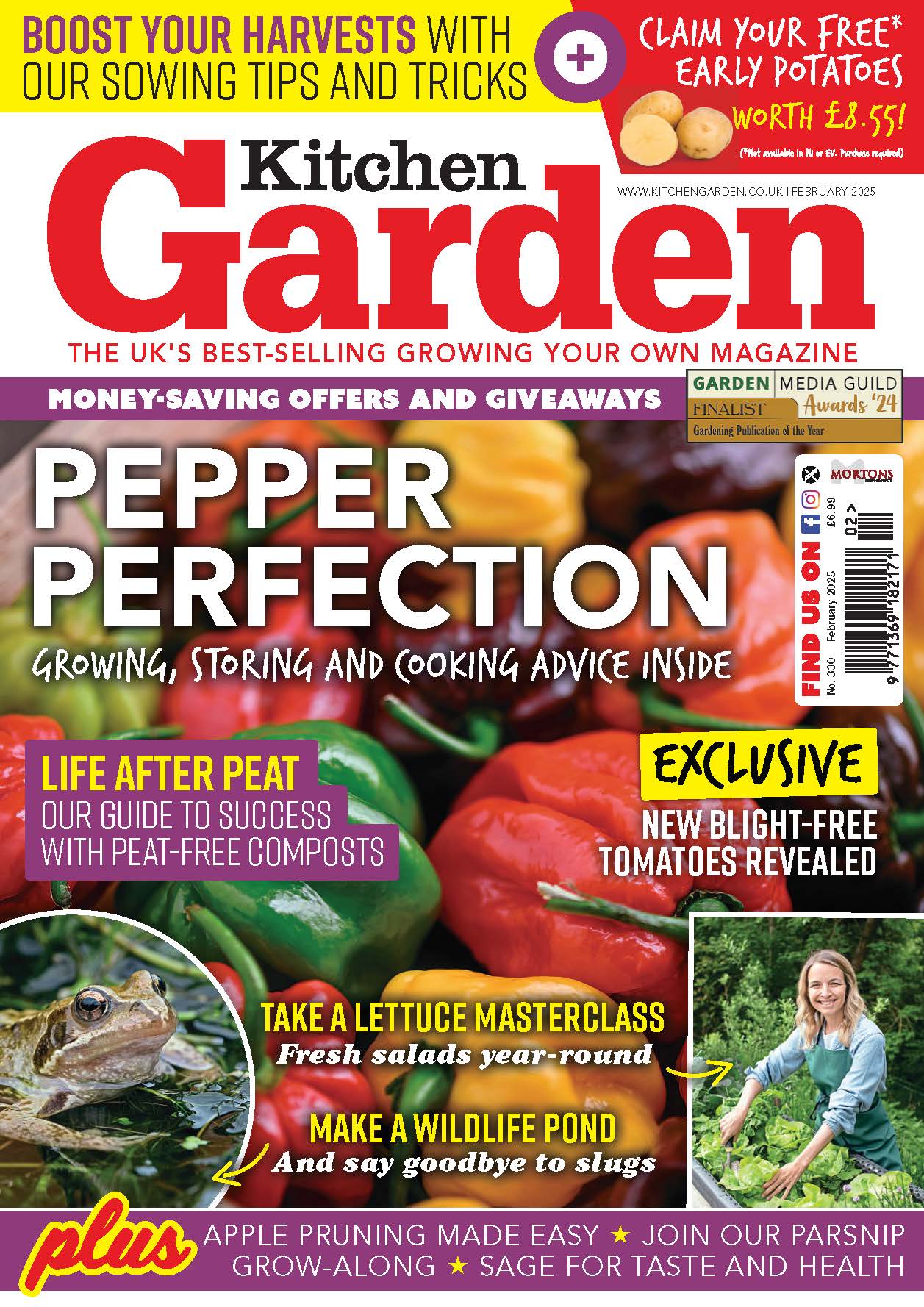Courgettes and marrows have to be the first choice for beginners to veg growing. They grow quickly and produce masses of fruit without too much trouble making them real confidence boosters.
As a bonus, they really are most attractive plants with big leaves and stunning yellow flowers that can also be eaten, especially tasty if battered and fried!
The difference between marrows and courgettes is debatable. In theory, a small courgette if left to grow will turn into a large marrow.
Botanically they are the same, but there has been a lot of plant breeding work done with courgettes and now there are varieties that are more distinctive in their own right – they produce more fruits, are more compact, bred to be less prickly and have a more open habit so the fruits are easier to pick.
Similarly there are varieties better to grow specifically as marrows such as ‘Tiger Cross F1’ and ‘Badger Cross F1’.
Varieties
- ‘Defender F1’
Produces excellent yields if you keep cutting the fruits. We grew these last year and did not have any plants succumb to the virus, which had been a problem with another variety the year before. - ‘Cavili F1’
This variety produces very pale green fruits and is parthenocarpic. This means it will produce fruit even if the flowers are not pollinated. It is said to have a creamier flesh texture than the more usual dark-skinned courgettes. - ‘Parthenon F1’
This also is parthenocarpic, but is the more usual dark green type. - ‘Kojac F1’
If you don’t like harvesting courgettes because of their prickly stems then grow this one. It has an open habit and hardly any spines. - ‘Orelia F1’
Long yellow fruits on vigorous plants. Good disease resistance.

Sowing & Growing Marrows and Courgettes
Courgettes and marrows are tender vegetables so are usually sown in containers and kept in warm conditions until planting out at the end of May or the beginning of June.
Ideally sow one seed in a small 9cm (31⁄2in) pot. Use large-celled seed trays with one seed per cell. A multi-purpose compost is fine or a John Innes seed or JI no 1 compost.
Place the pots on a warm windowsill or a propagator. Check them daily, as they are very quick to germinate. If too warm, the stems stretch very quickly making them top heavy.
Once they have germinated, move to cooler conditions such as the greenhouse bench or a cold frame to grow on.
Keep a watch out for slugs as courgettes are a particular favourite. When all danger of frost has passed, by about the end of May/beginning of June, the courgettes and marrows can be planted outside.
Growing on marrows & courgettes
Marrows and courgettes like a fertile soil. Some gardeners grow them on old muck heaps, which is fine if the manure is old.
New manure heaps will be too ‘hot’ in terms of temperature and richness so the leaves may scorch.
Scrumptious recipes for your homegrown marrows & courgettes
More on marrows & courgettes
More grow guides
For more growing tips and guides, you should subscribe to Kitchen Garden – you’ll receive free seeds with every single issue too!





